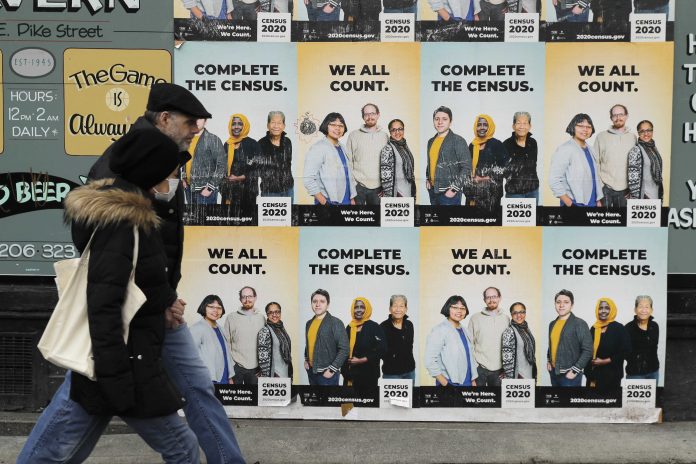
By MIKE SCHNEIDER
Associated Press
The amount of missing information in the 2020 census was less than feared, though it varied by state, the question asked, the type of housing and the mode in which U.S. residents answered the census form, Census Bureau officials said Wednesday.
Overall, the percent of U.S. households that didn’t provide answers about their age, race and Hispanic background was in the 5% to 6% range, requiring Census Bureau statisticians to fill in the missing details. A half-percent of households didn’t even provide a count of how many people lived there.
Counting the characteristics of a neighborhood, city or state correctly in the census is important since it can help determine whether political districts are drawn that allow Black or Hispanic communities to elect representatives that reflect their residents, and it helps direct the allocation of $1.5 trillion in federal spending annually.
While the rates of missing information was higher in the 2020 census than in 2010, it was lower than expected during a once-a-decade head count that was considered the most difficult in recent memory due to the pandemic, natural disasters and attempted political interference by the Trump administration.
Around two-thirds of all U.S. households answered the census questionnaire on their own, and those forms had the most complete answers.
In about a third of the U.S. households that didn’t answer the census form on their own, and required census-taker visits, census takers failed to get answers about the age of residents living there in almost a quarter of those homes, and they failed to get details on race or Hispanic background in about a sixth of those households.
When census takers were forced to ask a neighbor or landlord for information because they were unable to reach anyone living in the household, the rate of missing information was 60% for age, 41% for race and 38% for Hispanic origin.
“This is not surprising, as people who don’t live at a residence wouldn’t be expected to have full knowledge of the demographics, such as age or race, of their neighbors,” the Census Bureau said in a statement.
States with larger Latino populations had higher rates of residents not answering the question about their race, though the Census Bureau said that had more to do with respondents not identifying with the race categories on the census form.
Residents living in group housing like nursing homes, college dorms and prisons proved some of the most difficult places to get detailed information since the pandemic sent college students away from campuses and put prisons and nursing homes in lockdowns. The rate of missing information about Hispanic origin was 43% in group housing. It was 30% for race and 17% for age.
To fill in the information holes on census forms, Census Bureau statisticians searched other administrative records such as tax forms, Social Security card applications or previous censuses to find people’s race, age, sex and Hispanic background.
If available records didn’t turn up the information needed, they turned to the statistical technique called imputation that the Census Bureau has used for 60 years. The technique has been challenged and upheld in courts after past censuses.
In some cases, statisticians looked for information answered about one member of a family, such as race, and applied it to another member that had blank answers. Or they assigned a sex based on the respondent’s first name. In other cases, when the entire household had no information, they filled it in using data of similar neighbors.
















